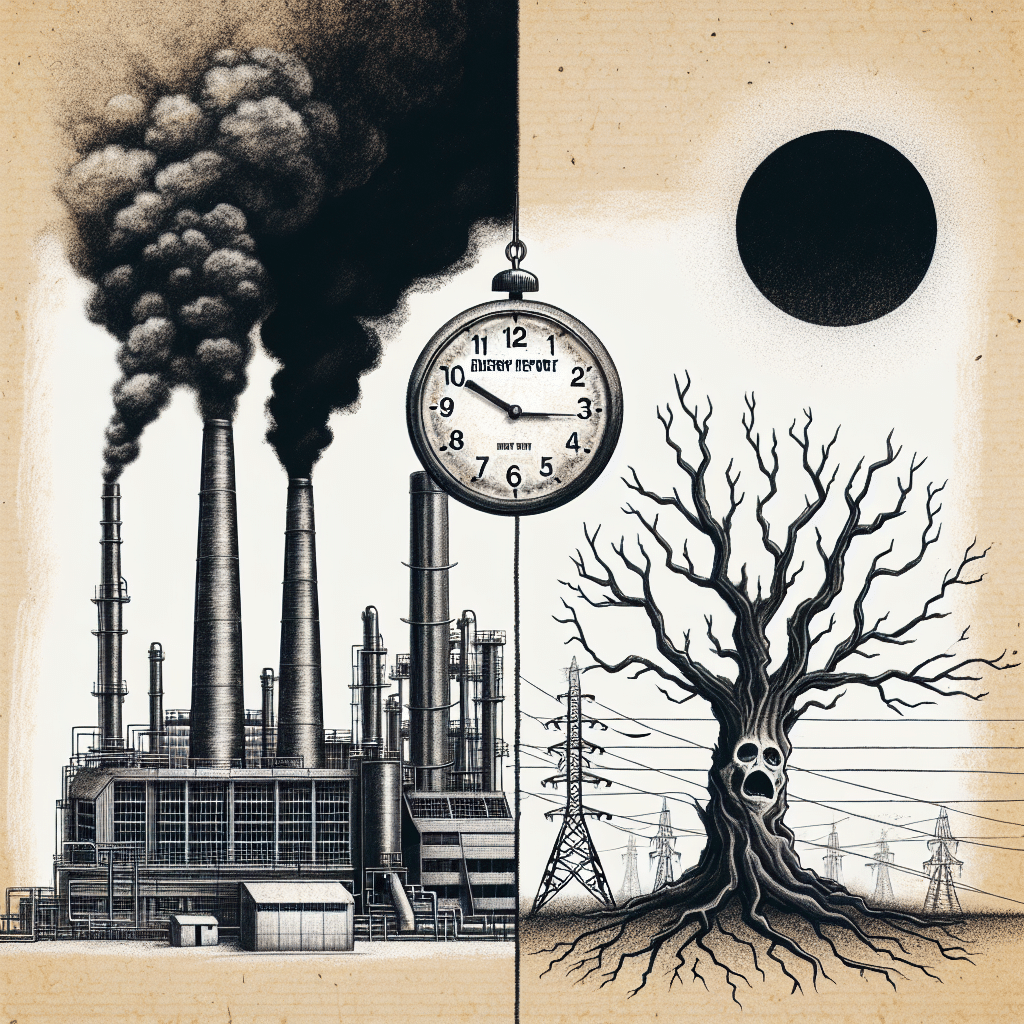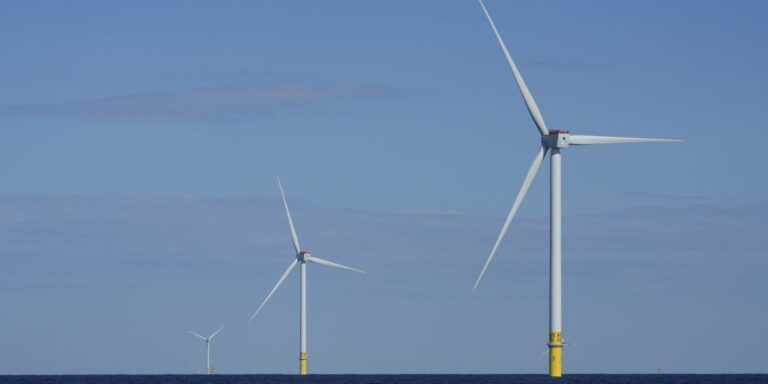[adrotate group="2"]
Time, time, time, time, time.
No time for a gentle rain.
No time for my watch and chain.
No time for revolving doors.
No time for the killing floor.
No time for the killing floor.
There’s no time left for you. No time left for you.
Guess who warned that time is running out and Europe could be left in the cold?
None other than Russian President Vladimir Putin.
Putin stated there is no time this year to finalize a new transit agreement with Ukraine.
He attributes the problem to Ukraine, which controls the pipeline delivering Russian gas to Slovakia, the Czech Republic, and Austria, and expressed willingness to explore alternative routes if other nations ease sanctions.
Ukrainian President Volodymyr Zelenskiy indicated he would allow the continued transit of Russian gas only if Moscow does not receive payment for the fuel until the conflict concludes.
I doubt that President Putin would easily accept a promise like “I’ll gladly pay you Tuesday for a hamburger today.”
Now, it may be too late.
Putin remarked on Thursday, “There is no contract, and it is impossible to conclude it in three to four days.”
Nevertheless, when it comes to these negotiations, time can always be found if desired.
European gas prices are climbing in response. Bloomberg reports that benchmark futures soared by as much as 5% on Friday, marking the largest rise in a week.
Bloomberg also noted that Central European countries still purchasing Russian gas are considering alternative methods to maintain gas flow through Ukraine, but President Zelenskiy has dismissed any deal that would send funds to Russia during the ongoing war.
As it stands, there will be no Russian gas transit from January 1, according to Heorhii Tykhyi, spokesperson for Ukraine’s Ministry of Foreign Affairs.
Reuters explains the implications of a total cessation of Russian gas transit through Ukraine and who would be most impacted.
Russian gas supplies to Europe via Ukraine are relatively minimal, with about 15 billion cubic meters (bcm) shipped in 2023—just 8% of peak Russian gas flows to Europe from various routes in 2018-19.
Russia invested half a century building its market share in Europe, which peaked at 35%.
Since the invasion of Ukraine in 2022, Moscow has lost market share to competitors like Norway, the United States, and Qatar, prompting the EU to reduce its reliance on Russian gas.
In 2022, EU gas prices soared to unprecedented levels following the decline in Russian supplies.
However, such a surge is unlikely to recur due to reduced volumes and a limited customer base for remaining supplies, according to EU officials and traders.
According to Reuters, Austria continues to receive most of its gas via Ukraine, while Russia supplies about two-thirds of Hungary’s gas imports.
Slovakia receives approximately 3 bcm annually from Gazprom, meeting around two-thirds of its gas needs.
The Czech Republic largely ended gas imports from the east last year but restarted Russian imports in 2024.
Most other Russian gas routes to Europe are non-operational, including the Yamal-Europe pipeline through Belarus and the Nord Stream pipeline under the Baltic Sea.
The only remaining operational Russian gas pipeline routes to Europe are the Blue Stream and TurkStream, supplying Turkey under the Black Sea. Turkey, in turn, forwards some Russian gas to Europe, including Hungary.
Why Does The Ukrainian Route Still Operate?
While the remaining Russian gas transit via Ukraine is limited, it remains a significant issue for the EU. Several EU countries, such as France and Germany, have pledged not to buy Russian gas; however, countries like Slovakia, Hungary, and Austria, with closer ties to Moscow, complicate the EU’s unified stance.
These countries argue that Russian gas remains the most economical option and blame neighboring EU states for high transit fees imposed on alternative supplies.
Ukraine continues to earn between $0.8 and $1 billion annually in transit fees from Russian gas.
According to calculations from Reuters, Gazprom’s total pipeline gas exports to Europe via all routes are expected to rise to 32 bcm in 2024 from 28.3 bcm in 2023, when they plummeted to their lowest levels since the 1970s.
Russia could potentially earn around $5 billion from these sales via Ukraine this year, based on an average forecasted Russian government gas price of $339 per 1,000 cubic meters, as calculated by Reuters.
Gazprom, Russia’s gas export monopoly, reported a net loss of $7 billion in 2023, marking its first annual loss since 1999 due to the loss of EU markets.
Russia has expressed willingness to extend the transit deal, but Kyiv has consistently rejected this option. An alternative could involve Gazprom supplying gas through different routes, like TurkStream to Bulgaria, Serbia, or Hungary, but capacity through these avenues is limited.
Hungary has been inclined to keep the Ukrainian route operational but plans to continue receiving Russian gas from the south via the TurkStream pipeline beneath the Black Sea.
The EU and Ukraine have also approached Azerbaijan to facilitate talks with Russia regarding the gas transit agreement.
A senior source from Azeri energy company SOCAR informed Reuters that Moscow and Kyiv have not yet reached an agreement on the deal brokered by Azerbaijan to continue Russian gas exports through Ukraine.
In the oil market, sentiments were somewhat tempered as the EIA report did not align with the more optimistic projections from the API. Nonetheless, the EIA suggests a very tight supply-demand balance.
The EIA reported a reduction in U.S. commercial inventories by 0.9 million barrels from the previous week. Current U.S. crude oil inventories stand at 421.0 million barrels, approximately 6% below the five-year average for this time of year.
Total motor gasoline inventories increased by 2.3 million barrels week-over-week, now about 3% below the five-year average for this season.
Distillate fuel inventories dropped by 3.2 million barrels last week, sitting approximately 7% below the five-year average for this time.
In the past four-week period, total product demand averaged 20.4 million barrels per day, reflecting a 1.3% increase compared to the same timeframe last year.
Over the last four weeks, motor gasoline product supplies averaged 8.7 million barrels a day, up by 2.1% from the previous year.
Distillate fuel product supplied averaged 3.8 million barrels a day over the same four-week stretch, a 4.8% rise from the previous year.
Jet fuel product supplied increased by 11.6% compared to the same four-week period last year.
[adrotate group="2"]





